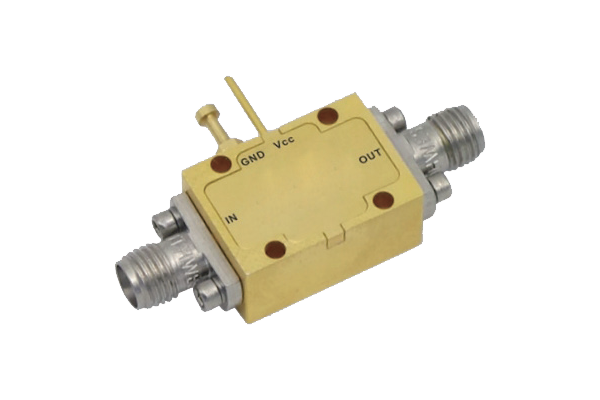
Pin diode components are considered indispensable in advanced RF applications because of their core operational properties Their prompt switching characteristics combined with low capacitance and small insertion loss enable efficient use in switching modulation and attenuation scenarios. The underlying principle of PIN diode switching involves controlling charge flow through the junction by biasing the device. A change in bias voltage transforms the depletion-region width of the p–n junction, affecting conductance. Adjusting the bias enables PIN diodes to be switched for high-frequency operation while minimizing distortion
In designs requiring accurate timing control PIN diodes are integrated into refined circuit architectures They are effective in RF filter designs to allow selective passage or rejection of designated frequency ranges. Their competency in managing strong signals qualifies them for amplifier power splitter and signal source applications. Miniaturized high-efficiency PIN diodes now find more applications in wireless and radar technologies
Performance Considerations for Coaxial Switch Engineering
Creating coaxial switches is a challenging task that demands consideration of a variety of technical parameters Performance depends on which switch style is used the operational frequency and insertion loss performance. Designs should focus on cutting insertion loss and increasing isolation to improve switch performance
Examining performance entails assessing return loss insertion loss and isolation figures. These values come from combined use of simulations theoretical predictions and experimental validation. Precise performance analysis is essential for guaranteeing dependable coaxial switch function in applications
- Simulations combined with analytic methods and practical experiments are standard for coaxial switch evaluation
- Environmental temperature impedance mismatches and production tolerances can significantly influence switch characteristics
- Cutting-edge developments and emerging trends in switch engineering work to improve performance while shrinking size and reducing power usage
Design Strategies for Low Noise Amplifiers
Optimization of LNA gain efficiency and overall performance is critical to achieve excellent signal preservation This requires careful selection of transistors bias conditions and circuit topology. High quality LNA layouts suppress noise sources and deliver amplified signals with limited distortion. Simulation based analysis is critical to understand design impacts on LNA noise performance. Lowering the Noise Figure is the aim, indicating enhanced preservation of input signal over generated noise
- Selecting low-noise active devices is central to achieving low overall noise
- Properly set optimal and appropriate biasing reduces transistor noise generation
- Circuit topology choices are decisive for the resulting noise performance
Implementing matching networks noise reduction strategies and feedback control enhances LNA outcomes
RF Routing Strategies with PIN Diode Switches

PIN diode switch networks offer flexible and efficient means to route RF energy in many systems Fast state changes in these devices permit agile dynamic routing of RF signals. Key benefits include minimal insertion loss and strong isolation to limit signal deterioration during switching. They find use in antenna selection systems duplexers and phased array antennas
Operation relies on changing the device resistance via applied control voltage to switch paths. In its open state the diode’s resistance is high enough to stop signal flow. When a positive control voltage is applied the diode resistance decreases reduces or falls allowing RF signals to pass
- Moreover furthermore additionally PIN diode switches provide quick switching low energy use and small form factors
Multiple configurable architectures and design schemes of PIN diode switches facilitate complex routing operations. Arranging multiple switches in networked matrices enables flexible routing and dynamic configuration
Measuring the Performance of Coaxial Microwave Switches

Testing and assessment of coaxial microwave switches are crucial to ensure efficient operation within systems. Multiple determinants including insertion reflection transmission loss isolation switching speed and operating bandwidth shape performance. A comprehensive evaluation process involves measuring these parameters under a variety of operating environmental and test conditions
- Additionally the assessment should examine reliability robustness durability and the ability to endure severe environmental conditions
- Ultimately the results of a well conducted evaluation provide critical valuable and essential data to guide selection design and optimization of switches for specific applications
Thorough Review of Noise Reduction Methods for LNAs
LNA circuits play a crucial role in wireless radio frequency and RF systems by boosting weak inputs and restraining internal noise. The article delivers a wide-ranging examination analysis and overview of methods used to reduce noise in LNAs. We investigate explore and discuss critical noise mechanisms like thermal shot and flicker noise. We examine noise matching feedback loop designs and bias optimization techniques for noise mitigation. The review emphasizes recent innovations including novel materials and architecture approaches that decrease noise figures. By giving a clear understanding of noise reduction principles and practices this article aims to assist researchers and engineers in developing high performance RF systems
Applications of Pin Diodes in High Speed Switching Systems

They possess unique remarkable and exceptional qualities beneficial for high speed switching Their low capacitance and resistance aid rapid switching speeds to meet demands requiring precise timing control. Moreover PIN diodes exhibit linear proportional responses to applied voltage enabling precise amplitude modulation and switching control. Such versatility flexibility and adaptability renders them appropriate suitable and applicable for diverse high speed scenarios Common applications encompass optical communications microwave circuits and signal processing hardware and devices
IC Based Coaxial Switch and Circuit Switching Technologies
Integrated circuit coaxial switch technology marks a significant advancement in signal routing processing and handling within electronic systems circuits and devices. These integrated circuits are tailored to control manage and route signals via coaxial connections with high frequency performance and low insertion latency. Miniaturization through IC integration results in compact efficient reliable and robust designs fit for dense interfacing integration and connectivity scenarios
- Through careful meticulous and rigorous implementation of these approaches engineers can achieve LNAs with exceptional noise performance supporting sensitive reliable systems By meticulously carefully and rigorously applying these methods developers can produce LNAs with superior noise pin diode switch performance enabling sensitive reliable electronics By meticulously carefully and rigorously applying these methods developers can produce LNAs with superior noise performance enabling sensitive reliable electronics With careful meticulous and rigorous execution of these strategies designers can obtain LNAs exhibiting excellent noise performance for sensitive reliable systems
- Use cases include telecommunications data communications and wireless network infrastructures
- Coaxial switch IC implementations support aerospace defense and industrial automation applications
- These technologies appear in consumer electronics A V gear and test and measurement setups
LNA Design Challenges for mmWave Frequencies

At mmWave frequencies LNAs must contend with greater signal attenuation and intensified influence from noise sources. At millimeter wave ranges parasitics dominate so meticulous layout and selection of components is essential. Input matching minimization and power gain maximization are critical essential and important for mmWave LNAs. Choosing appropriate active devices like HEMTs GaAs MESFETs or InP HBTs is key to achieving low noise at mmWave bands. Additionally the development implementation and optimization of matching networks plays a vital role in efficient power transfer and impedance matching. Attention to package parasitics is crucial as they have potential to harm mmWave LNA performance. Adopting low loss transmission media and careful ground plane strategies is essential necessary and important to cut reflections and retain bandwidth
PIN Diode Behavior Modeling for RF Switching
PIN diodes are vital components elements and parts used throughout numerous RF switching applications. Thorough precise and accurate characterization of these devices is essential for designing developing and optimizing reliable high performance circuits. That entails analyzing evaluating and examining electrical voltage and current characteristics such as resistance impedance and conductance. Additionally frequency response bandwidth tuning properties and switching speed latency or response time are assessed
Additionally moreover furthermore the development of precise models simulations and representations for PIN diodes is critical essential and vital for predicting behavior in complex RF contexts. Different numerous and various modeling strategies are available including lumped element distributed element and SPICE models. Selecting an appropriate model simulation or representation depends on the specific detailed application requirements and the desired required expected accuracy
Advanced Cutting Edge Sophisticated Techniques for Low Noise Quiet Minimal Noise Amplifier Design
LNA engineering calls for careful topology and component selection to meet stringent noise performance goals. Recent semiconductor breakthroughs and emerging technologies enable innovative groundbreaking sophisticated noise reduction design techniques.
Notable techniques include employing utilizing and implementing wideband matching networks incorporating low-noise transistors with high intrinsic gain and optimizing biasing schemes strategies and approaches. Furthermore advanced packaging and thermal control strategies play an essential role in lowering external noise contributions. Through careful meticulous and rigorous application of such methods engineers can design LNAs with top tier noise performance enabling dependable sensitive systems
